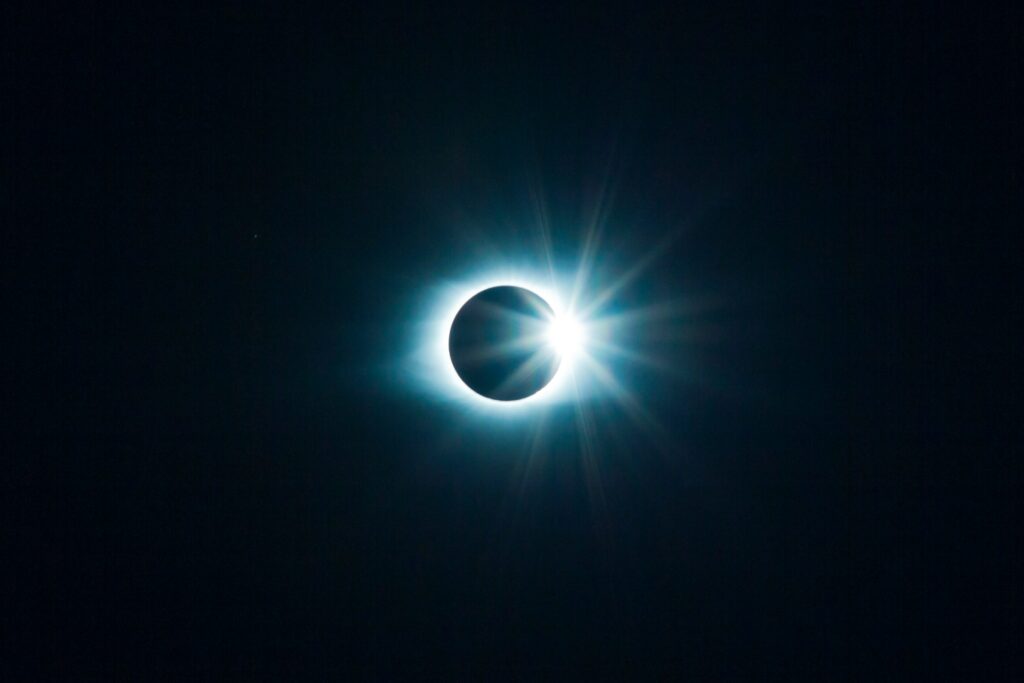Estimated reading time: 18–26 minutes
Short summary: In the past decade black hole science has moved from theoretical speculation and indirect detection to direct imaging, routine gravitational-wave detections, and rich multi-messenger astronomy. This article surveys the key observational breakthroughs — Event Horizon Telescope images, LIGO/Virgo/KAGRA gravitational-wave catalogs, high-energy X-ray and radio studies of jets and accretion, and new insights from space telescopes — and explains what these discoveries tell us about gravity, black-hole formation and growth, and the role black holes play in galaxy evolution.
Table of contents
- Why black holes matter now
- A quick primer: what is a black hole?
- The Event Horizon Telescope: imaging shadows
- Gravitational waves: listening to spacetime
- Multi-messenger astronomy: linking photons, gravitational waves, and particles
- Accretion disks, jets, and high-energy phenomena
- Black hole demographics: stellar-mass vs. supermassive
- Tests of general relativity and alternative theories
- The black hole information puzzle and quantum hints
- Black holes as engines of galaxy evolution
- New instruments and future prospects (LISA, ngEHT, Athena, JWST, ELTs)
- What we still don’t know — and how we’ll find out
- Practical resources, data access, and how to follow the field
- Final thoughts: from shadows to catalogs — a new era
1. Why black holes matter now
Black holes sit at the intersection of astrophysics, fundamental physics, and cosmology. Recent observations have transformed them from largely mathematical curiosities into empirical laboratories where we can probe gravity under extreme conditions, study the lifecycle of stars and galaxies, and test the quantum interface of spacetime. The observational renaissance is driven by three advances:
- High-resolution imaging (Event Horizon Telescope and radio interferometry).
- Direct detection of gravitational waves from compact-object mergers (LIGO/Virgo/KAGRA).
- Sensitive multi-wavelength astronomy (X-ray, optical/IR, submillimeter, and gamma-ray observatories).
Together these tools let us both see the environment right near event horizons and listen to violent mergers across the Universe.
2. A quick primer: what is a black hole?
A black hole is a region of spacetime where gravity is so strong that nothing — not even light — can escape. Three properties fully characterize an isolated astrophysical black hole in general relativity: mass, spin (angular momentum), and electric charge (the latter is negligible for astrophysical black holes). The event horizon marks the point of no return; the photon ring and innermost stable circular orbit (ISCO) define the last orbits where light and matter can orbit stably.
Black holes come in two broad mass classes relevant to observations:
- Stellar-mass black holes (a few to tens of solar masses) — formed by the collapse of massive stars and often observed in X-ray binaries.
- Supermassive black holes (millions to billions of solar masses) — residing in galaxy centers and powering active galactic nuclei (AGN).
Intermediate-mass black holes (IMBHs, from a few hundred to a few hundred thousand solar masses) are observationally elusive but crucial for understanding how SMBHs grow.
3. The Event Horizon Telescope: imaging shadows
The breakthrough images
In April 2019 the Event Horizon Telescope (EHT) collaboration released the first direct image of a black hole’s shadow — the ring of emission surrounding the dark silhouette of the SMBH at the center of galaxy M87. In 2022 the EHT produced the first resolved image of Sagittarius A* (Sgr A*), the Milky Way’s central black hole. These images are landmark achievements: they visualize the gravitationally lensed photon ring and the flow of hot plasma near the event horizon.
What the images told us
- General relativity passes the test: The size and shape of the shadow are consistent with predictions from GR for a Kerr (rotating) black hole with the measured mass of M87* and Sgr A*.
- Accretion behavior: The brightness asymmetry in the images reflects relativistic Doppler beaming from plasma orbiting at relativistic speeds, helping constrain accretion models (radiatively inefficient accretion flow—RIAF—for M87* and more turbulent flows for Sgr A*).
- Magnetic fields and jet launching: Polarization data from EHT images reveal ordered magnetic fields near the horizon, supporting magnetically arrested disk (MAD) models where strong magnetic flux regulates accretion and can launch powerful relativistic jets.
Limitations and future work
EHT images are snapshots convolved with observation cadence and scattering effects (especially for Sgr A*). Improving dynamic imaging, increasing baseline coverage (ngEHT), and merging multi-frequency data will sharpen our understanding of time-variable flows and tests of strong-field GR.
4. Gravitational waves: listening to spacetime
From first detection to catalogs
The first direct detection of gravitational waves (GW150914) in 2015 by LIGO revealed the inspiral and merger of two stellar-mass black holes — a discovery that opened a new observational window. Since then, the LIGO-Virgo-KAGRA network has detected hundreds of compact-object mergers, producing catalogs (GWTC-1, GWTC-2, GWTC-3, and ongoing releases) that map the populations of black holes and neutron stars across cosmic time.
Key insights from GW observations
- Mass spectrum surprises: GW detections revealed heavier stellar-mass black holes (30–80 solar masses) than those typically inferred from X-ray binaries, reshaping models of stellar evolution and binary formation.
- Pairing and formation channels: By measuring spins and eccentricities, GW signals inform whether black-hole binaries formed in isolated binaries (common-envelope evolution) or dynamical environments (globular clusters, nuclear star clusters).
- Intermediate-mass black holes: Several GW events hint at mergers that produce intermediate-mass remnants, filling the observational gap between stellar and supermassive scales.
- Tests of gravity: The inspiral-merger-ringdown waveforms provide stringent tests of general relativity in the strong-field, highly dynamical regime — no deviations from GR have been unequivocally detected so far.
Multi-band GW astronomy (future)
Space-based observatories like LISA will probe lower-frequency gravitational waves from massive black-hole binaries and extreme-mass-ratio inspirals (EMRIs), complementing ground-based detectors and giving a fuller census of black-hole mergers.
5. Multi-messenger astronomy: linking photons, gravitational waves, and particles
The field matured rapidly after the detection of GW170817, a binary neutron-star merger with an associated short gamma-ray burst and kilonova across the electromagnetic spectrum. While neutron-star mergers provided the first multi-messenger success, black hole mergers present more complex prospects:
- Black hole–black hole (BH–BH) mergers are typically “dark” in photons, but events in gas-rich environments or hierarchical triples could produce EM signatures.
- Black hole–neutron star (BH–NS) mergers may produce EM counterparts depending on whether the neutron star is tidally disrupted before plunging into the black hole — offering opportunities for nucleosynthesis and jet formation studies.
Coordinated observing networks now routinely follow GW alerts with telescopes across the spectrum, searching for transient counterparts and refining localization for follow-up.
6. Accretion disks, jets, and high-energy phenomena
Black holes are luminous when accreting. Observations from X-ray telescopes (Chandra, XMM-Newton, NuSTAR), radio arrays (VLA, ALMA), and gamma-ray observatories (Fermi) illuminate accretion physics and jet launching.
Accretion states and state transitions
Stellar-mass black holes in X-ray binaries show well-characterized spectral states (soft, hard, intermediate) linked to accretion rate and disk geometry. These states correlate with jet production: compact steady jets in hard states and powerful transient jets during state transitions.
Jet physics and feedback
Relativistic jets carry energy and momentum far from black holes, impacting surrounding gas. Observations of AGN jets show knotty structures, shocks, and particle acceleration sites producing synchrotron and inverse-Compton emission across many decades in energy.
X-ray spectroscopy and spin measurements
Fe Kα line profiles and relativistic reflection modeling constrain black hole spins. High spins favor efficient jet production via the Blandford–Znajek mechanism, though the spin–jet relation is nuanced and active area of research.
7. Black hole demographics: stellar-mass vs. supermassive
Stellar-mass populations
Gravitational-wave catalogs plus X-ray surveys are painting a diverse picture of stellar-mass black holes. Metallicity, stellar winds, and binary interactions shape the mass distribution. The detection of black holes in the pair-instability mass gap challenges some models and suggests alternative formation channels (e.g., hierarchical mergers).
Supermassive black holes and growth
Observations of quasars at high redshift show billion-solar-mass SMBHs within <1 Gyr of the Big Bang — a puzzle for growth models. Accretion physics, early direct-collapse seeds, and rapid mergers are all invoked to explain early SMBH assembly.
Intermediate-mass black holes
Evidence for IMBHs is accumulating from ultra-luminous X-ray sources (ULXs), nuclear star cluster dynamics, and GW events. Confirming these objects would clarify hierarchical growth paths leading to SMBHs.
8. Tests of general relativity and alternative theories
Black holes are prime arenas for testing GR. Recent tests include:
- Shadow morphology: Comparing EHT-derived shadow sizes with GR predictions constrains deviations in the black hole metric.
- Waveform consistency: GW events tested the inspiral-merger-ringdown consistency and searched for extra polarizations; results so far match GR’s predictions.
- No-hair theorem: Observational constraints on multipole moments and ringdown frequencies probe whether astrophysical black holes are described solely by mass and spin.
Currently, GR remains the best description, but the precision will increase with more detections and better imaging, potentially revealing subtle deviations or quantum signatures.
9. The black hole information puzzle and quantum hints
Theoretical work on the information paradox (Hawking radiation, entanglement, and black hole evaporation) continues to progress, with observational input limited but growing. Ideas like near-horizon quantum structure, echoes in ringdown waveforms, and subtle modifications to Hawking evaporation have motivated searches in GW data for echo-like signals. No conclusive detection yet — but improved GW sensitivity and precise horizon-scale imaging could eventually constrain quantum gravitational proposals.
10. Black holes as engines of galaxy evolution
Supermassive black holes regulate galaxy growth via feedback. Observations of AGN-driven outflows, buoyant bubbles in cluster hot gas, and jet–ISM interactions show black holes can heat or expel gas, quenching star formation and shaping galaxy scaling relations (e.g., the M–sigma relation).
High-resolution simulations now incorporate AGN feedback to reproduce observed galaxy populations, but the microphysics (how jets couple to multiphase gas) remains an active observational and theoretical frontier.
11. New instruments and future prospects (LISA, ngEHT, Athena, JWST, ELTs)
The coming decade will dramatically expand our capabilities:
- LISA (space-based GW observatory): Will detect mergers of massive black holes, EMRIs, and possibly primordial signals at millihertz frequencies.
- ngEHT (next-generation Event Horizon Telescope): Better sensitivity and dynamic imaging will allow movies of horizon-scale phenomena.
- Athena and XRISM: Advanced X-ray spectroscopy to probe accretion physics, winds, and the hot phase of AGN feedback.
- James Webb Space Telescope (JWST) and ELTs (Extremely Large Telescopes): Will push direct observations of high-redshift quasars, early SMBHs, and host galaxy properties.
- Upgrades to ground GW detectors and third-generation observatories (Einstein Telescope, Cosmic Explorer): Vastly increase GW detection rates and precision for testing gravity and tracing compact-object populations.
These facilities, working together, will close many current gaps in our understanding.
12. What we still don’t know — and how we’ll find out
Major open questions include:
- How did the earliest SMBHs grow so massive so quickly? (Addressed by JWST, ELTs, and high-z surveys.)
- Do intermediate-mass black holes exist in abundance? (Addressed by high-resolution dynamical measurements, GW events, and deep X-ray surveys.)
- What is the precise spin distribution and its origin? (Measured with X-ray reflection spectroscopy and GW parameter estimation.)
- Is there new physics near the horizon? (Probed by ringdown analyses, echoes, EHT movies, and precision shadow measurements.)
Coordinated multi-messenger campaigns, improved simulations, and new instruments will make progress on each of these fronts.
13. Practical resources, data access, and how to follow the field
If you want to dive deeper:
- EHT collaboration: mission pages, image releases, and data products.
- LIGO/Virgo/KAGRA public alerts and GWTC catalogs for event lists, parameter estimates, and data.
- NASA, ESA, and major observatory press rooms for mission updates (Chandra, XMM-Newton, Fermi, JWST).
- arXiv.org for preprints and rapid dissemination of research.
- Public data archives: HEASARC (X-ray), NRAO/ALMA (radio), MAST (optical/IR) host datasets for independent research.
Many collaborations provide outreach materials and visualization assets usable in blogs and classrooms — always credit the original teams when using images.
14. Final thoughts: from shadows to catalogs — a new era
Black hole astrophysics has entered an era of empirical richness. Imaging event horizons, cataloging mergers across cosmic time, and mapping AGN feedback are no longer separate pursuits but components of a unified effort to understand compact objects across scales. While theoretical puzzles — quantum gravity, information loss, early SMBH growth — remain, the observational toolkit is more powerful than ever. The next decade promises not incremental updates but potentially transformative discoveries that will reshape our understanding of gravity, matter under extreme conditions, and the cosmic role of black holes.
If you’d like, I can now:
- Convert this article into WordPress-ready HTML (headings, image placeholders, SEO title and meta description).
- Produce a 600–900 word summary for social sharing.
- Create 3 suggested images with captions and alt text tied to EHT, LIGO, and a multiwavelength AGN composite (I’ll cite the image sources).
Which of those should I prepare next?




